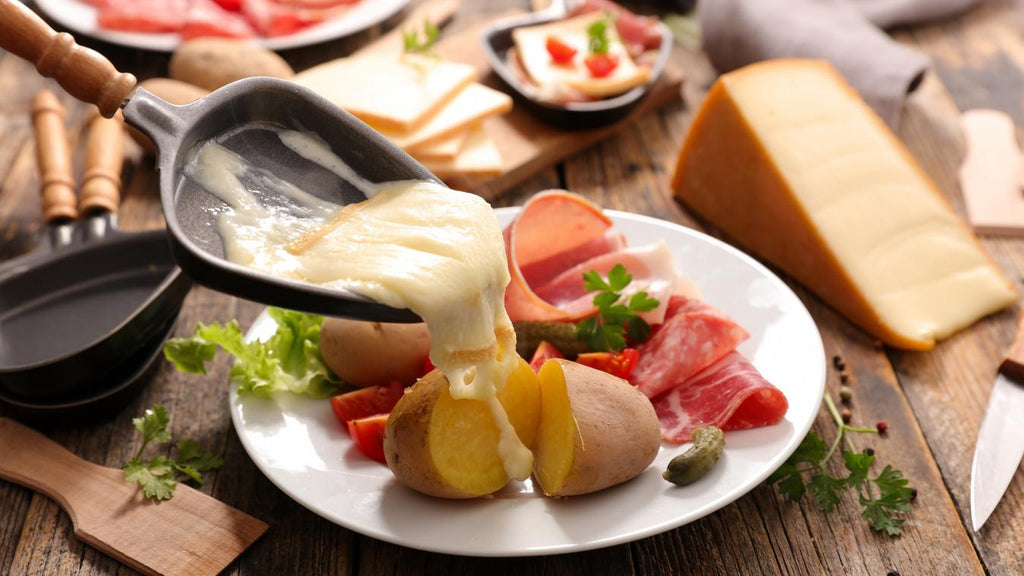There is something undeniably warm and communal about gathering around a bubbling wheel of raclette. This indulgent dish—melted cheese scraped over potatoes, pickles and cured meats—has escaped its alpine roots to become a global symbol of convivial dining. Guests participate in melting and serving the cheese, and that shared activity sparks conversation and laughter. Unlike preplated dinners where everything arrives at once, raclette invites people to linger, serve themselves and enjoy the company. Even for hosts, the meal feels relaxed, because most of the cooking happens at the table and everyone takes turns scraping the cheese.

Raclette originates in Switzerland’s Valais canton, where herders carried wheels of cheese. Texts from the late thirteenth century describe warming slices by the fire and scraping the melted part onto bread or potatoes. That act gave the dish its name, from the French verb racler, meaning “to scrape”. Today the word refers both to the dish and the semi‑soft, washed‑rind cheese. Traditional Raclette du Valais is made from raw cow’s milk, brined and aged on pine shelves for about three months. Its high fat content makes it an excellent melter, and the alpine grasses eaten by cows give it nutty, buttery notes.
Serving raclette remains simple, yet endlessly customizable. The classic approach involves heating a half wheel or individual slices until they bubble and then scraping the molten layer over boiled potatoes, cornichons and pickled onions. In Switzerland people have historically enjoyed raclette in the winter after long days in the snow, but residents of Valais eat it year‑round. Today hosts often expand the spread with bowls of grilled vegetables, apple chutney, smoked meats or even sweet fruit like figs and pears. Because each person prepares their own plate, raclette suits vegetarian friends as easily as meat lovers and encourages experimentation.
How the cheese is melted varies by setting. In Switzerland, restaurants often use a grattoir: a server heats a portion of the wheel and expertly scrapes the melted cheese onto diners’ plates. This theatrical presentation adds to the charm of dining in the Alps. In France and many homes elsewhere, electric table‑top grills allow guests to melt their own slices. Both methods emphasize interaction; the pace of melting and scraping encourages conversation, and the host’s main role is to assemble ingredients and supply refills. Warm beverages such as black tea or a glass of Fendant wine complement the richness and aid digestion.
To host a memorable raclette night, start with quality cheese. Look for the AOP label on Raclette du Valais. Arrange firm potatoes, pickles, cured meats, grilled vegetables and a crisp salad. Offer crisp whites, light reds or herbal teas. Let guests build their plates and remind them that the slower rhythm is part of the pleasure. Raclette is more than food; it is a ritual of warmth and sharing. Add it to your repertoire and see how it transforms an ordinary dinner into an Alpine adventure. Try raclette at your next gathering to experience its enduring appeal with friends and family.



